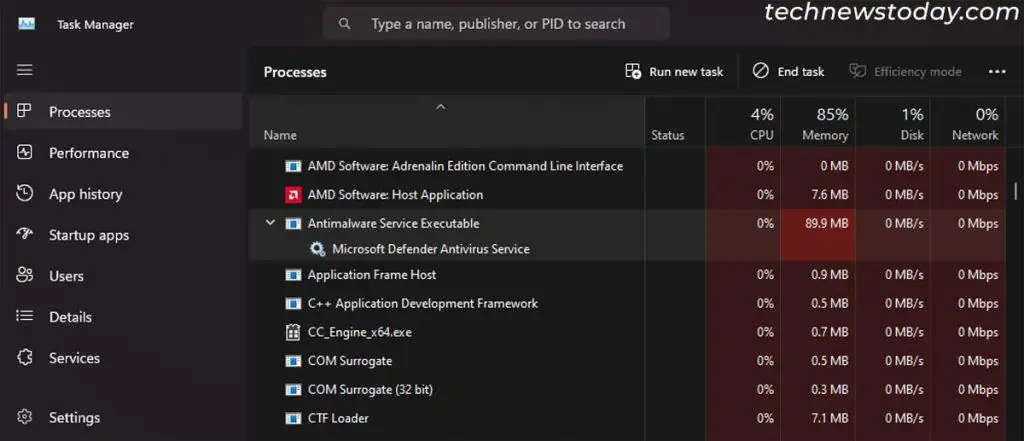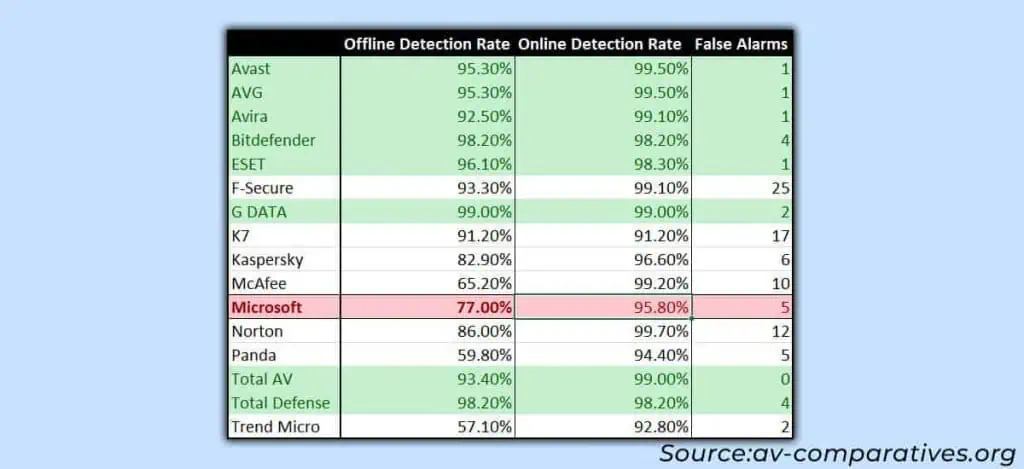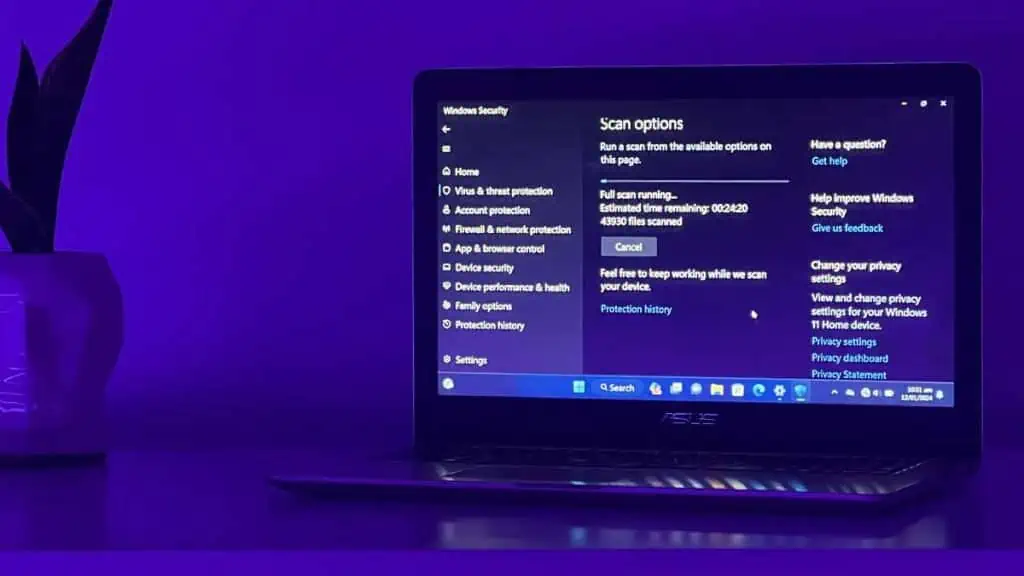Windows Defender is a good enough antivirus for most general users, provided you adopt safe internet practices. It’s not only free and performance-friendly but also provides better-than-average malware protection.
However, it may not protect your system against all threats. If you are carrying very sensitive data or need top-of-the-line security, other antivirus solutions might be better instead.
Let’s now discuss what makes Microsoft Defender the optimal choice for basic users.
Requires No Configuration
Microsoft Defender is a free built-in application on Windows that requires no configuration. You can just let it run in the background and go about your work without any worries.
Additionally, the security features for Windows Defender get automatically installed along with regular system updates. So, there’s no need to download and install the latest version as with third-party apps.
It might not come with all the additional services that other premium products offer but it is good at what it does – providing malware protection.
Minimal Impact on System Performance
Not just that! Microsoft Defender is one of the most performance-friendly antivirus utilities out there.
Most third-party antivirus solutions run multiple processes at the same time, leading to high CPU/RAM usage. This leads to frequent lags or too slow performance when transferring files, loading apps, or even browsing the internet!
On the other hand, Microsoft Defender only runs a single process for the real-time scan. So, you’ll experience almost no performance difference.

Do note that it may somewhat slow down your system while installing apps, or archiving/unarchiving files.
Least Intrusive User Experience
Untimely pop-ups, prompts to update the software, loads of notifications— these are all the problems that come with a lot of third-party solutions.
On the other hand, Microsoft Defender is the least invasive utility and best when it comes to user experience. Besides a barely noticeable popup after a scheduled scan, it’ll only alert you when it detects malware.
Low Amount of False Positives
Most antivirus solutions are notorious for treating safe third-party archives or executable files as malware. Such instances of false positives are very rare with Windows Defender.
In case it treats a safe app as malware, you can simply include the files or the folders in the exclusion list (Virus & threat protection > Manage settings > Add or remove exclusions).
When Not to Use Windows Defender?
Microsoft Defender has a high malware detection rate when your PC is connected to the internet. However, if we look at recent malware protection tests from AV-Comparatives, it’s still far from the best:

As you can see there’s a significant difference, especially in the offline detection rates.
So, Windows Defender may not be sufficient in the following scenarios:
- If your system contains extremely sensitive information.
- You wish to have the most malware-proof system.
- For better browser security, especially against phishing attacks.
- If you want extra features with your antivirus like built-in VPN, password managers, etc.
- For less tech-savvy users who have yet to learn all the internet safety tips.
- For any small to large organization, there are much better antivirus utilities to protect your system against zero-day attacks.
Final Verdict
Windows Defender is a fantastic option for users who are familiar with the online world and follow the internet safety guidelines properly.
However, if you want better protection or additional features, it’s better to opt for a third-party antivirus solution. Some of my recommendations include Avast, AVG, Avira, and BitDefender.
